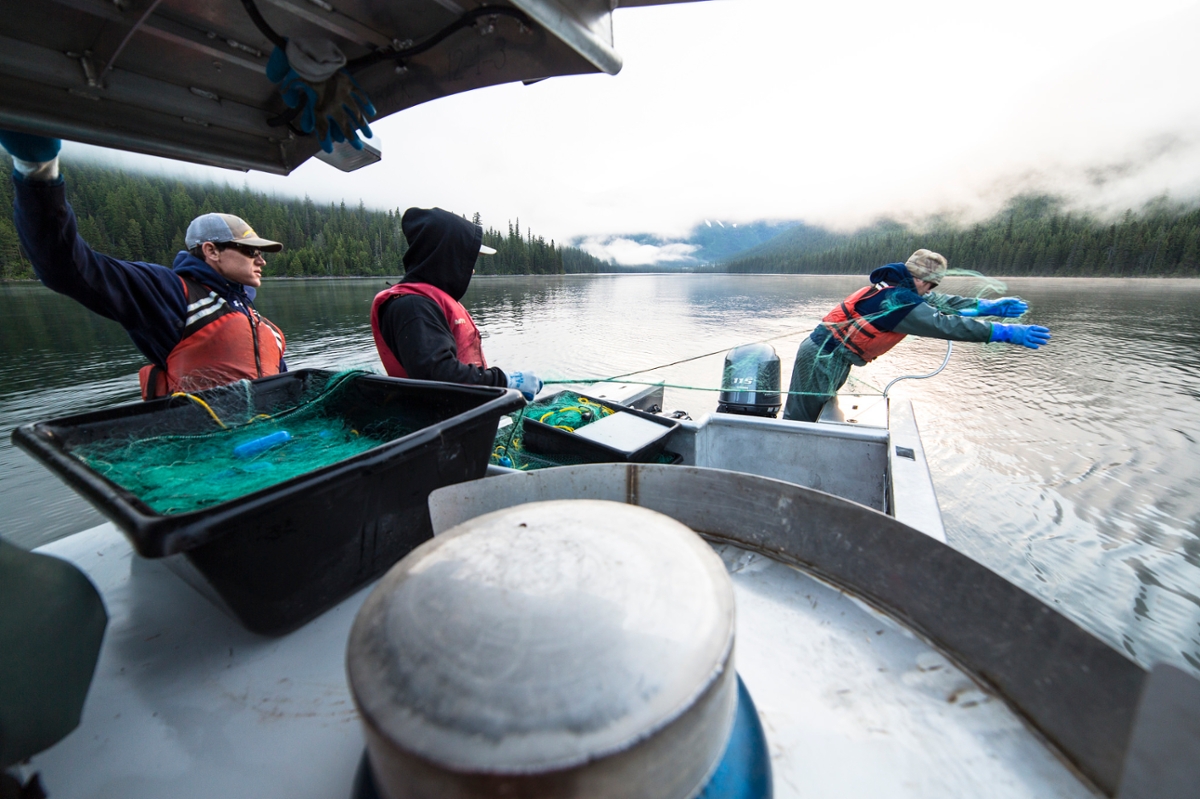Glacier National Park Works to Save Bull Trout (Part 2 of 2)

Logging Lake was historically home to one of the most robust bull trout populations in Glacier National Park. But when lake trout showed up, the population crashed. Translocating, or moving, bull trout upstream to Grace Lake is a way to put some of the bull trout population in “the bank,” so to speak, and protect it until lake trout can be removed from Logging Lake. As Glacier fisheries biologist Carter Fredenberg explains, “The reason we chose Logging and Grace is because there is a natural barrier between the two lakes, keeping Grace Lake protected from invading lake trout. We were at the very last stages of where we thought bull trout might become extirpated from Logging Lake if something was not done, so we got together with [U.S. Geological Survey] and said, ‘Let’s move fish!’”
At the inlet to Logging Lake, 111 juvenile bull trout were captured using backpack electrofishing equipment. The young trout were then put into garbage bags filled with water that had been supersaturated with oxygen and cooled by ice packs. Finally, the bags went into backpacks that were then hiked to the Grace Lake inlet. The idea was to move some of the last remaining members of this population into a safe location above the falls, while gillnetting as many lake trout as possible in Logging Lake, driving that population down. The hope is that many of the bull trout established in Grace Lake can be moved back into Logging Lake once the habitat is more suitable for their success.
But saving a species takes more than just figuring out how to move fish. It requires integrating bull trout recovery with the overall management of Glacier National Park. For example, state and federal laws require the control of invasive species – but Glacier’s fisheries biologists must also, by law, take care to preserve the wilderness character of the park. Wilderness concerns have to be reconciled with the team’s critical mission to save the bull trout, a species that is federally listed as threatened and a fish that has a key role to play in the ecology and cultural landscape of the park.
The fisheries team doesn’t net lake trout during peak visitor months so as not to detract from visitors’ wilderness experience. They also avoid disturbing other species that share these areas with the bull trout.
“We take care to avoid impacts to wildlife like loons and eagles, and are constantly working to minimize bycatch of other fish species in the lake trout removal nets,” Downs said. “We pay attention to behavior and do everything we can to limit disturbance to those critters. It’s a balancing act. We try to make the best decisions we can with the information we have at the time.”
By Tom Sentner
